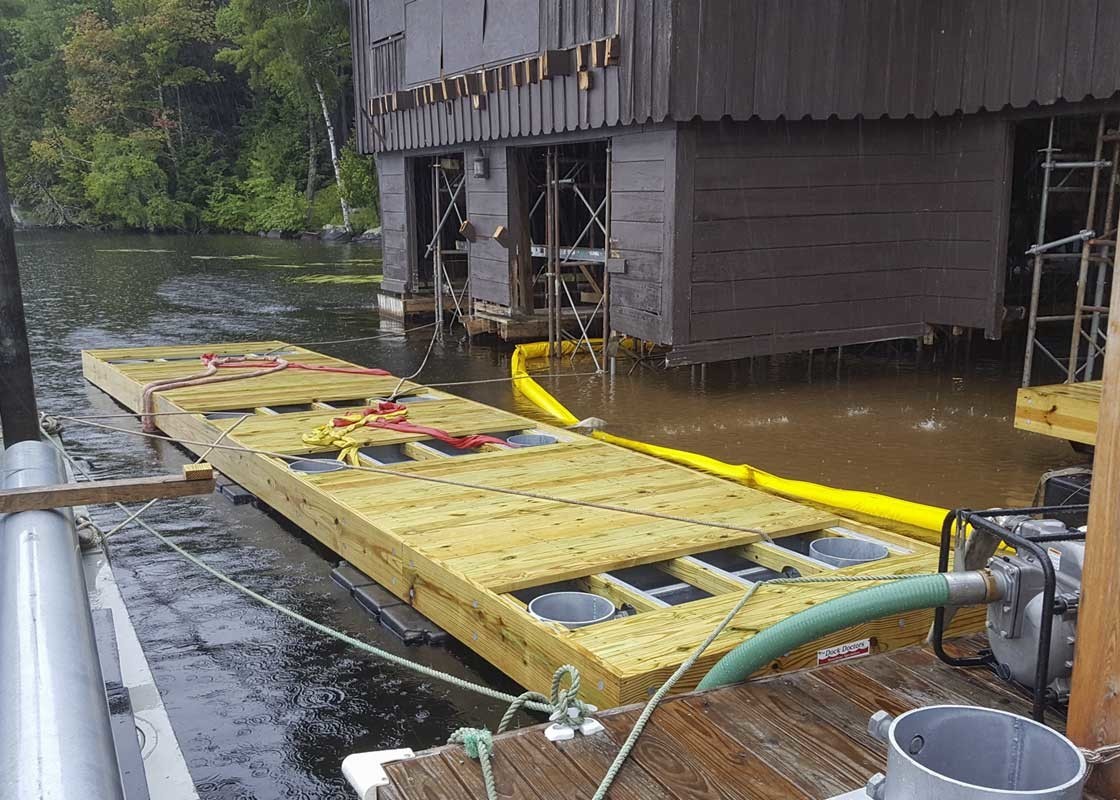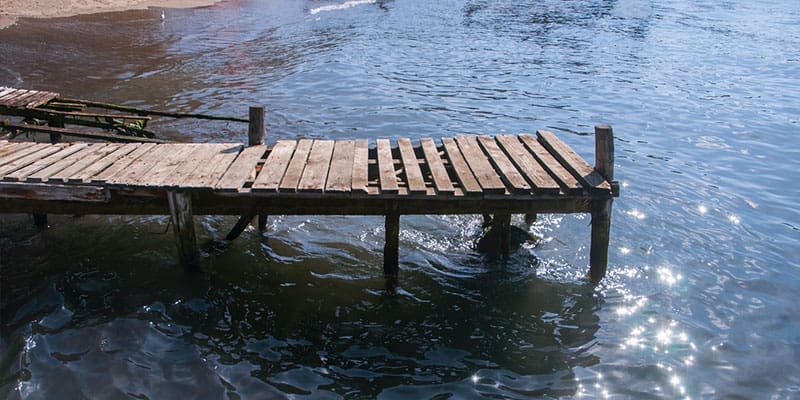Effective Dock Repair Techniques: Guaranteeing Structural Honesty
Making certain the structural honesty of docks with reliable fixing techniques is critical for the long life and safety and security of aquatic centers. This involves a multi-faceted technique starting with comprehensive inspections using sophisticated modern technologies like finder equipment and remotely operated automobiles (ROVs) to find both noticeable and concealed problems. Consequently, choosing the best repair materials, such as composite products and corrosion-resistant alloys, is crucial for resilience. Architectural reinforcement techniques, including the application of cross-bracing systems and load-distribution plates, play an essential role in mitigating stress and anxiety factors. The relevance of these methods comes to be apparent when discovering innovative repair service techniques and preventative upkeep methods.
Examining Dock Damages
Evaluating dock damages is a crucial very first action in guaranteeing the architectural honesty and security of any docking facility. This initial evaluation entails a comprehensive assessment to identify both concealed and visible damages. Secret elements to take a look at include the dock's foundation, pilings, outdoor decking, and equipment. Each element has to be scrutinized for indications of wear, rot, deterioration, or various other forms of deterioration that can jeopardize the structural integrity.
Architectural designers or qualified inspectors commonly perform these analyses making use of specialized devices and methods. As an example, underwater examinations may use finder devices or remotely ran cars (ROVs) to discover immersed damage. Above water, aesthetic examinations are complemented by making use of wetness meters and other diagnostic tools to reveal underlying problems not immediately noticeable to the nude eye.

Deciding On Fixing Materials
Selecting the ideal repair service materials is a critical action in the dock restoration process, one that straight influences the durability and performance of the fixed structure. Product option must be driven by variables such as ecological conditions, load-bearing needs, and compatibility with existing dock components.
In addition to timber, composite products are increasingly preferred as a result of their longevity and reduced maintenance needs. Compounds, usually made from a mix of plastic and wood fibers, supply exceptional resistance to rot, pests, and UV damage. For steel anchors, selecting corrosion-resistant alloys such as galvanized steel or marine-grade aluminum is important to stop corrosion and guarantee structural honesty in saline water conditions.
Epoxy materials and marine-grade sealants are crucial for fixing splits and sealing joints, offering a water resistant obstacle and improving the dock's general toughness. By meticulously selecting top notch materials, dock repair services can accomplish durable results, therefore protecting against future degradation and ensuring risk-free, trusted use.
Architectural Support Techniques
Efficient architectural reinforcement techniques are essential in ensuring the stability and longevity of dock repair services. This approach is specifically efficient for docks exposed to hefty loads or severe ecological problems.
One more crucial strategy is the application of fiber-reinforced polymers (FRP) These materials supply high strength-to-weight proportions and superb resistance to deterioration, making them ideal for strengthening concrete or wood docks. FRP can be applied in strips or sheets and bonded with epoxy materials to boost structural integrity.
Supporting and anchoring systems additionally play an essential role in structural support. Cross-bracing, utilizing steel or wood beams, can combat lateral pressures, minimizing swaying and activity. Anchoring systems, such as helical piers or driven heaps, give a secure foundation by transferring lots to much deeper, extra steady soil layers.
Last but not least, the assimilation of load-distribution plates can aid distribute weight extra uniformly across the dock's surface, minimizing localized stress and anxiety factors. These techniques collectively ensure that anchors remain robust and risk-free, qualified of holding up against the rigors of their functional environment.
Advanced Repair Work Approaches

Another advanced technique involves undersea welding, which enables fixings to be performed without the demand to dewater the location. This technique is especially helpful for attending to architectural problems in submerged dock components, More hints ensuring marginal disturbance to procedures. Improved welding techniques, coupled with robot systems, supply precision and dependability, therefore prolonging the life expectancy of the dock.
Furthermore, cathodic security systems are implemented to avoid corrosion in metallic dock frameworks. By making use of sacrificial anodes or satisfied current systems, these methods successfully alleviate the electrochemical processes that bring about product wear and tear.
Lastly, progressed monitoring technologies, such as architectural health surveillance (SHM) systems, supply real-time data on the problem of dock structures. These systems make it possible for positive maintenance and prompt interventions, eventually guaranteeing the original site lasting structural honesty of the dock.
Maintenance and Avoidance
Maintenance and avoidance are fundamental principles that underpin the longevity and safety and security of dock structures. Normal evaluations are extremely important, enabling very early detection of deterioration, potential weaknesses, and ecological impacts. An aggressive approach, including routine look for rust, rot, and architectural changes, minimizes costly fixings and lengthens the dock's functional life.
Preventive steps ought to include applying protective coatings to metal elements to guard against rust and making use of cured wood to withstand degeneration. Additionally, ensuring appropriate drainage and air flow can avoid water buildup, which is a typical reason for architectural deterioration. Incorporating high quality materials and sticking to manufacturer guidelines during building and construction and fixing phases likewise play vital duties in boosting longevity.

Training employees in dock upkeep finest practices ensures regular application of preventative actions. Leveraging technical advancements, such as drones for evaluations and sensors for real-time surveillance, can additionally improve maintenance initiatives. By prioritizing upkeep and avoidance, dock owners can ensure structural honesty, operational safety, and cost-efficient administration over the dock's lifespan.
Conclusion
In verdict, preserving the architectural stability of aquatic facilities necessitates detailed dock repair work strategies. Complete evaluations making use of sophisticated devices uncover both noticeable and concealed problems, while the selection of appropriate fixing materials boosts resilience. Applying structural support methods addresses anxiety points efficiently. Advanced fixing techniques, combined with normal maintenance methods, make sure the dock remains operational and risk-free under varied environmental conditions. Embracing these approaches considerably lengthens the life-span and functionality of aquatic framework.
Guaranteeing the architectural stability of anchors with reliable repair techniques is critical for the durability and security of marine facilities.Selecting the suitable repair work materials is a critical step in the dock remediation process, one that directly influences the durability and performance of the repaired structure.Reliable architectural home reinforcement strategies are critical in ensuring the security and long life of dock repair services. By focusing on upkeep and avoidance, dock owners can guarantee structural honesty, functional security, and affordable management over the dock's lifespan.
In verdict, preserving the structural integrity of aquatic facilities requires detailed dock repair service methods.
Comments on “Leading Signs You Required Specialist Dock Repairs This Season”